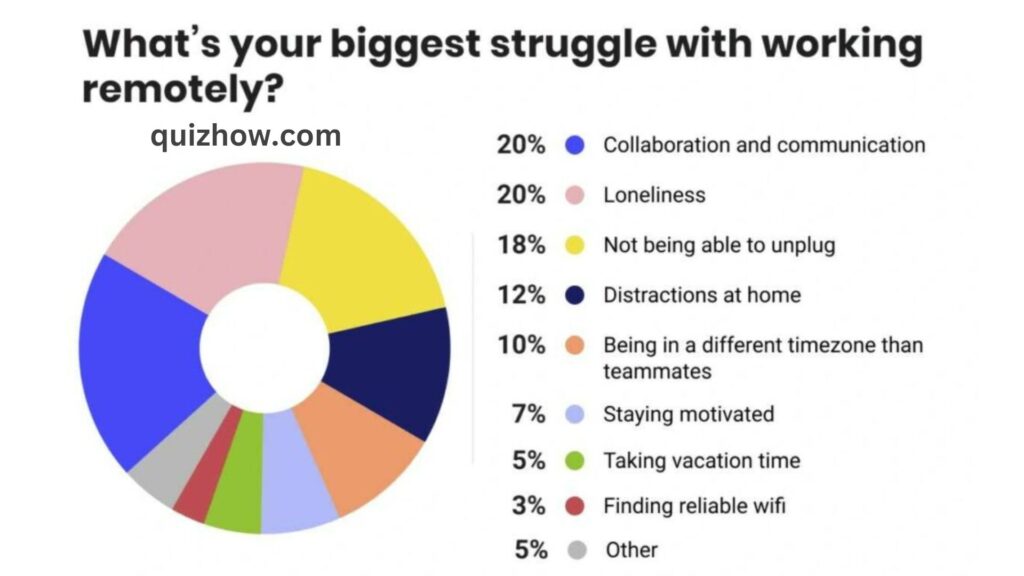According to a 2021 survey, 56% of US companies have been ramping up their remote work arrangements.
With more workers spread out across various locations, managers worldwide are navigating the challenges of leading remote teams. And let’s face it—managing a team in person is already tough enough!
But managing remote teams has its own set of challenges, and the effort is well worth the rewards. How you handle this shift can really showcase your leadership skills.
Think of this post as your guide to managing remote teams. We’ll start by tackling common issues virtual managers face and then dive into our top tips for leading your remote team with confidence.
Challenges of managing remote teams
Working from home has become pretty common now, but many companies didn’t even consider remote work until the global pandemic made it a necessity.
Before we dive into strategies for managing remote teams, let’s look at some of the main challenges leaders and their teams face when adapting to this new way of working.
Adjusting to a New Routine
We’re creatures of habit. From our morning commutes to our evening snacks, our daily routines have likely been pretty consistent. Switching to remote work can feel like everything’s been turned upside down. You’ll need to set up a new routine and balance personal and professional tasks from home. On top of that, you’ll be dealing with new virtual tools, communication methods, and remote work policies, which can make managing a remote team feel overwhelming.
Adapting to Tech-Based Communication
In the office, if you had a problem or needed a quick opinion, you could just walk over to a colleague. But in a remote setup, that’s not so easy. About 45% of employees worry about not seeing their team members in person, and 34% are unsure about collaborating virtually. Ensuring a smooth digital experience is crucial. As communication shifts to emails and instant messages, both managers and team members struggle to get timely answers.
Balancing Work and Personal Time
When you worked in an office, it was easier to separate your work life from your personal life. But remote work blurs these lines. Personal responsibilities can distract from work, and work can invade family time. Both managers and employees need to find a balance between their professional and personal lives.

Building Trust and Connection
Managing remote teams means you have to ensure your team knows you’re available to lead and support them. But with limited face-to-face interaction, it can be hard to gauge their engagement and emotional well-being. Without seeing body language and non-verbal cues, understanding your team’s concerns and needs becomes more challenging.
We’re not trying to overwhelm you with these challenges, but it’s important to recognize that leading remote teams requires extra effort. To truly manage and engage your remote team effectively, you’ll need to put in the work. Let’s move on to some strategies to help you succeed in this new remote landscape.
Best Practices for Managing Remote Teams
Ready to get the hang of managing remote teams? Here’s how you can get the best results from your remote employees:
1. Set Clear Expectations
About 34% of remote workers say that transparency from their leaders makes them feel more connected. To achieve this, be clear about the rules and expectations for your team. Let them know:
- The company values and behaviors
- Remote work procedures
- Project-specific guidelines
- Communication style preferences
- Workload and availability expectations
Kick things off with a meeting to introduce all the policies, and then keep reinforcing them in regular check-ins.
2. Choose the Right Communication Channels

Email has its place, but it’s not always the best tool for everything. For things like status updates, project schedules, and troubleshooting, consider using instant messaging, virtual meetings, or cloud sharing. Avoid overwhelming your team with too many tools. Instead, use a single platform like Blink, which offers messaging, social feeds, and document sharing all in one.
3. Schedule Regular Check-Ins
It’s easy to check in with your team in the office, but you can do the same with remote teams. Start with daily 15-20 minute meetings where each team member shares their plan for the day and any issues they’re facing. As your team gets used to remote work, you can adjust the frequency based on what works best.

4. Focus on Mental Health and Well-Being

Remote work can make it harder to spot mental health issues. The World Health Organization says anxiety and depression cost the global economy $1 trillion annually, but investing in mental health can bring a $4 return for every $1 spent. Support your team by offering mental health benefits, encouraging open communication, and providing resources for self-care. Regular breaks are important too.
5. Celebrate Achievements
Celebrate both big and small wins with your remote team. Whether it’s a virtual party, a gift delivered to their door, or a bonus day off, showing appreciation keeps motivation high. Don’t wait for major milestones; even small successes deserve recognition to keep your team encouraged.
Also Read: Improving Your Leadership Skills
6. Document Everything
Managing remote teams can get complex quickly. Document everything clearly and make it accessible. Include detailed checklists, playbooks, flow charts, and forms. Store these documents on a shared platform so your team can easily access them and stay on track.
7. Create Social Opportunities

Remote work can sometimes feel isolating. Encourage social interaction with virtual hangouts, brainstorming sessions, morning coffee chats, online lunches, and team-building games. These activities help build connections and improve collaboration.
By following these tips, you’ll be better equipped to manage and engage your remote team effectively.

Discover more from QuizHow
Subscribe to get the latest posts sent to your email.

